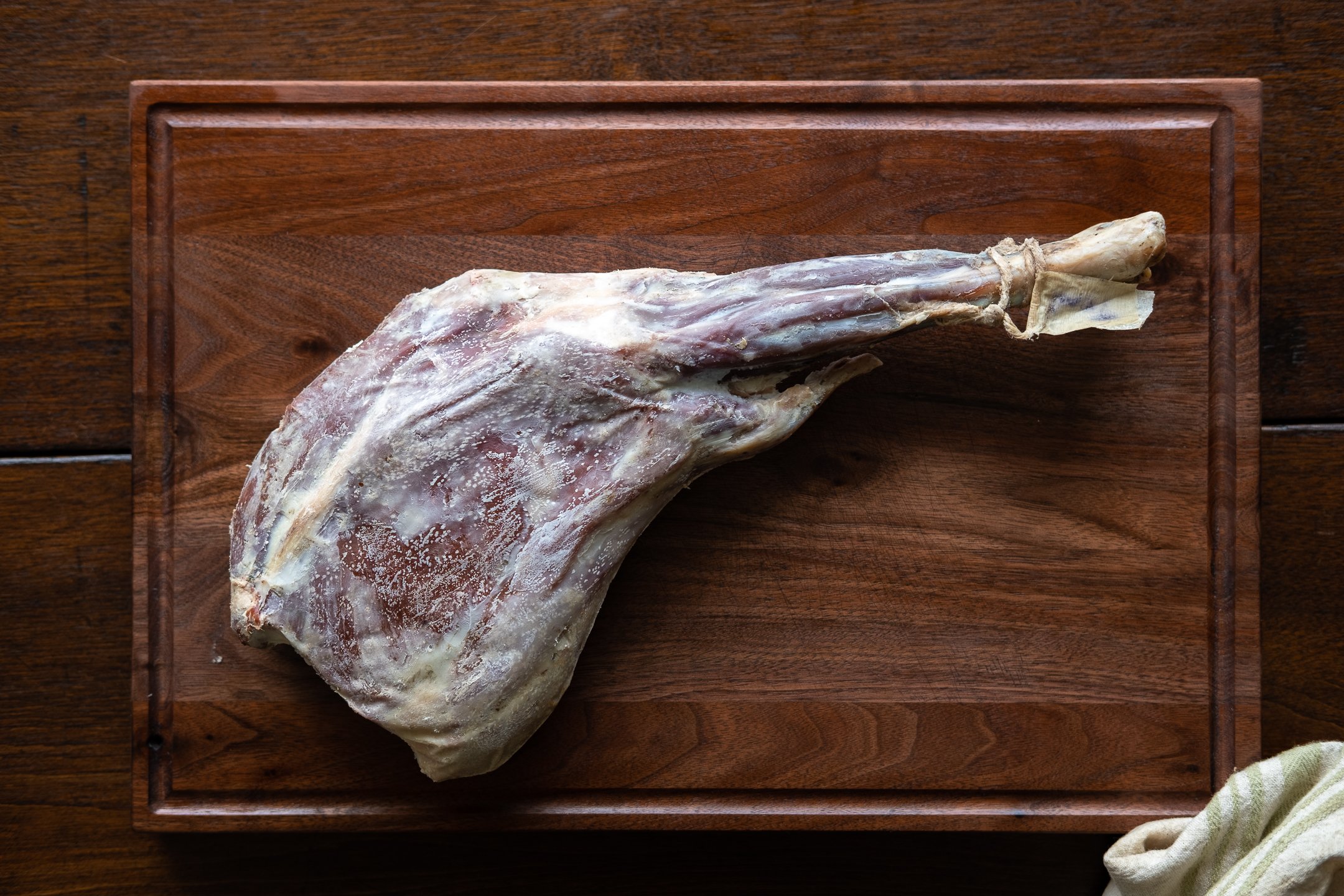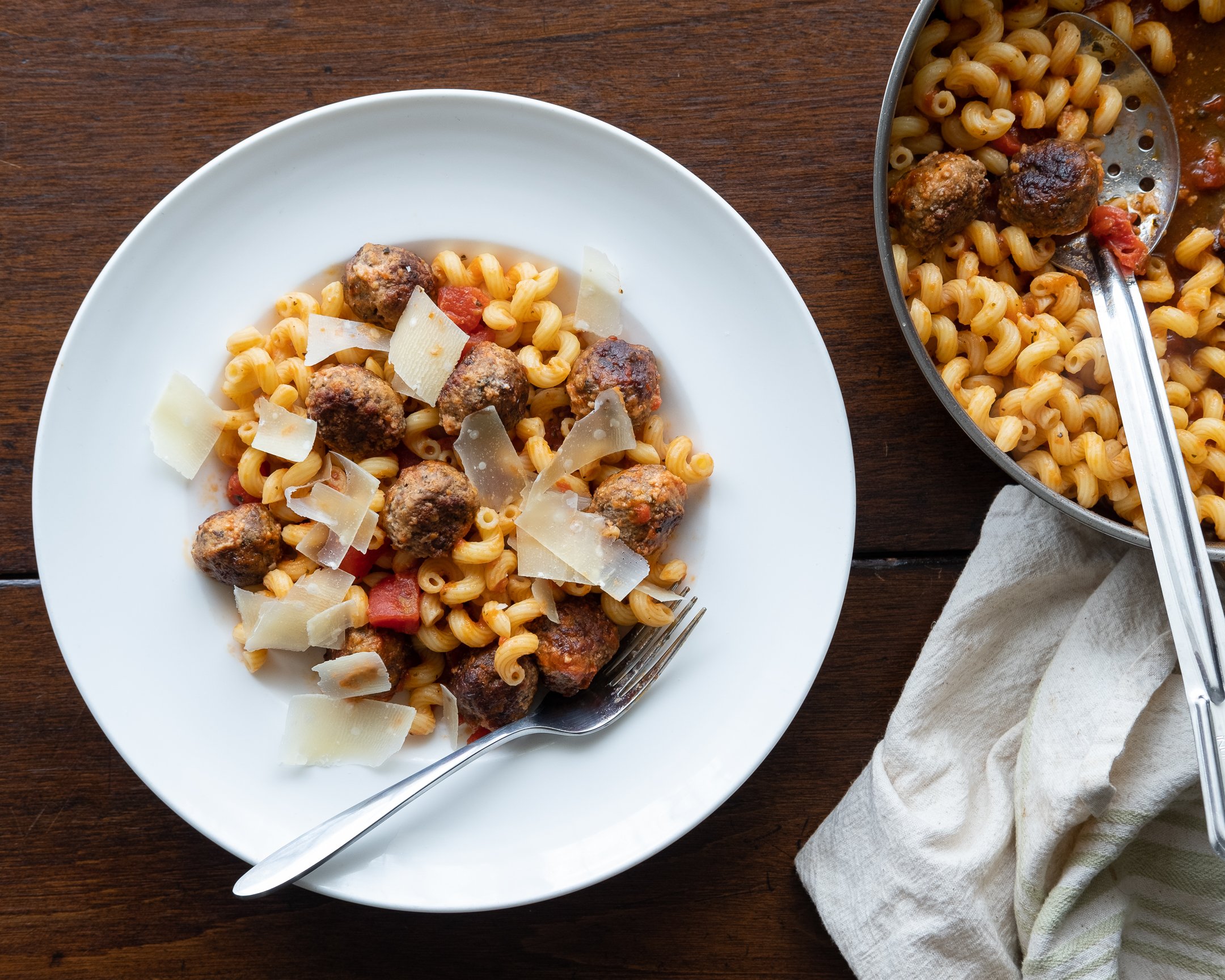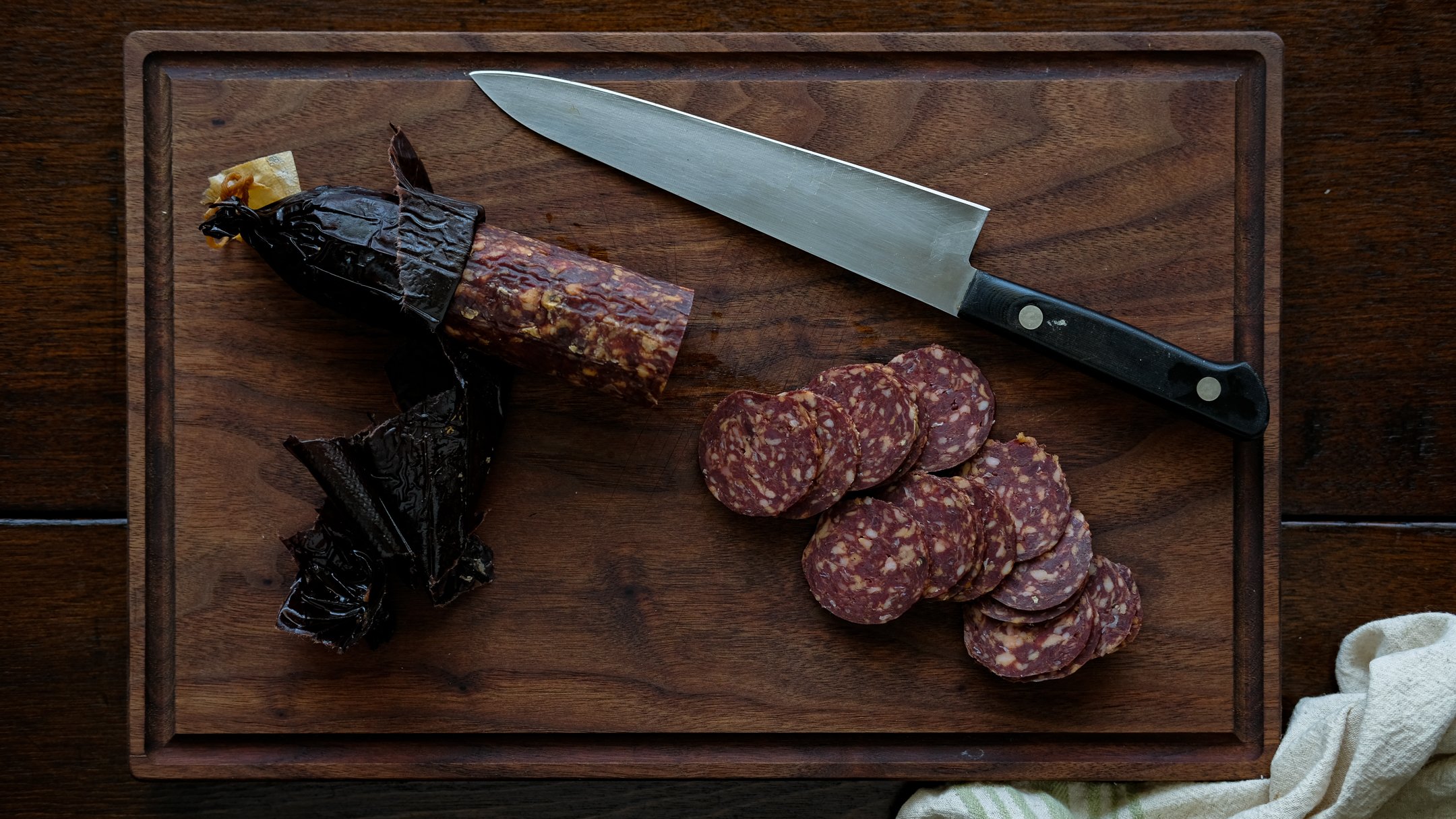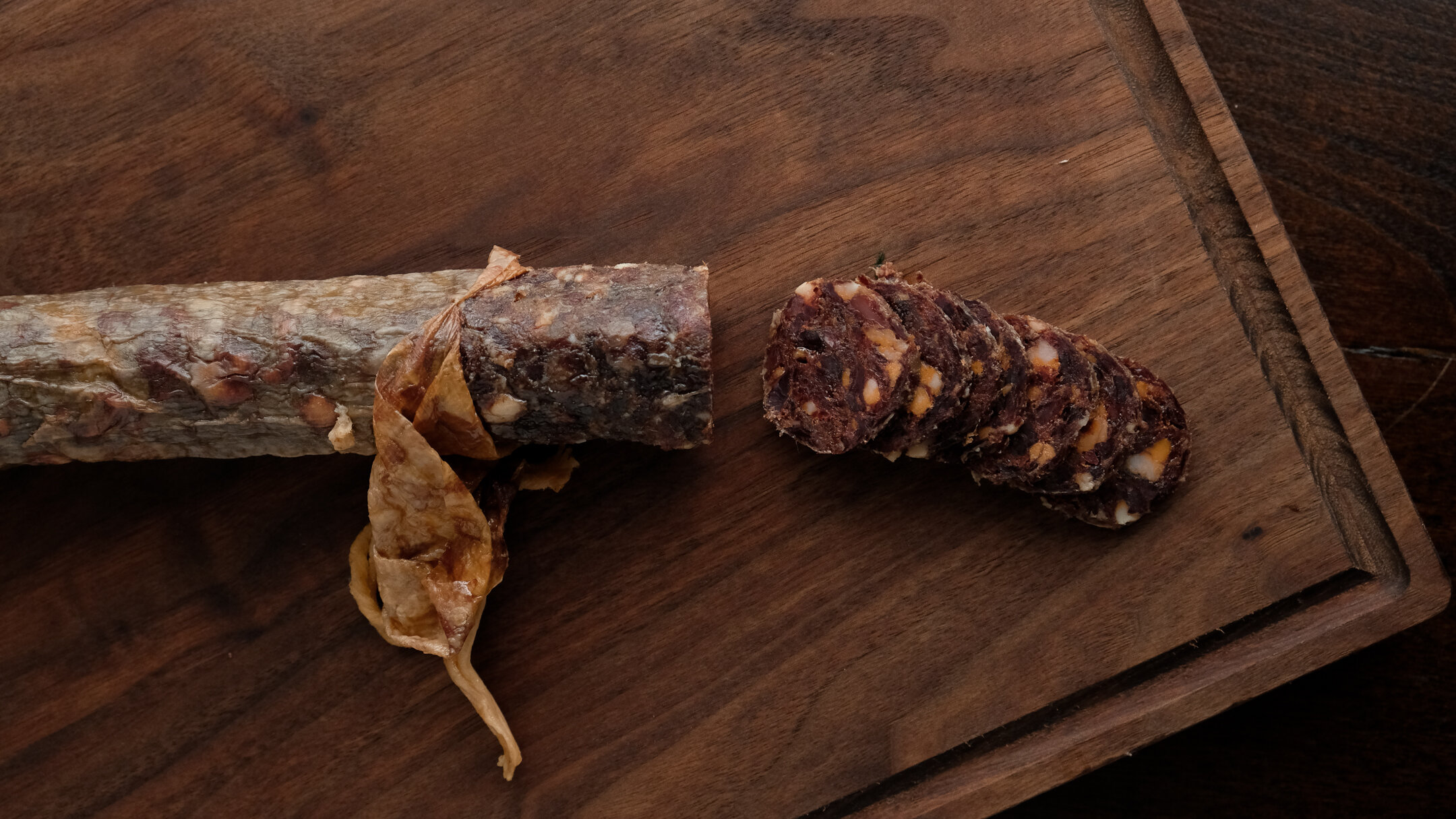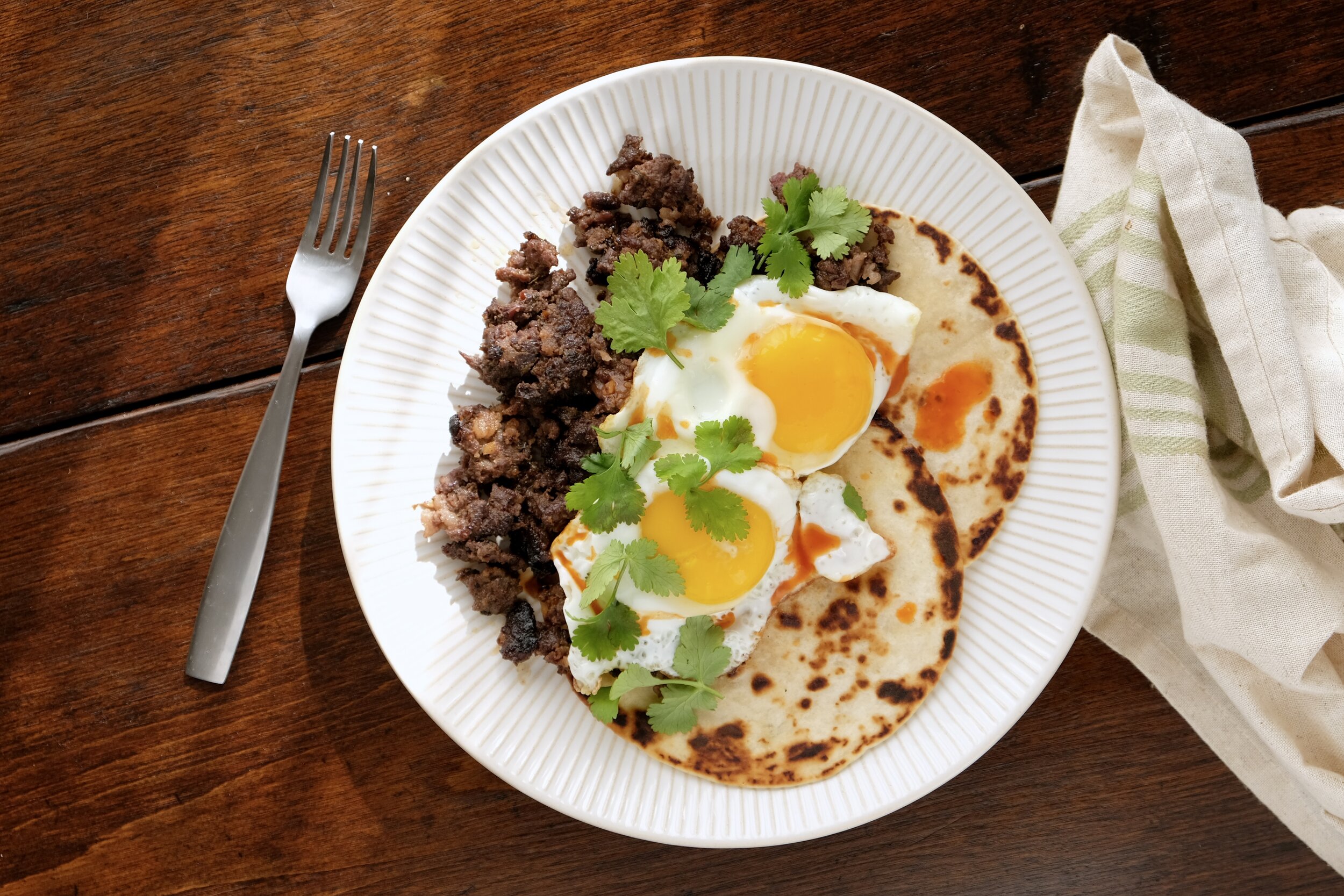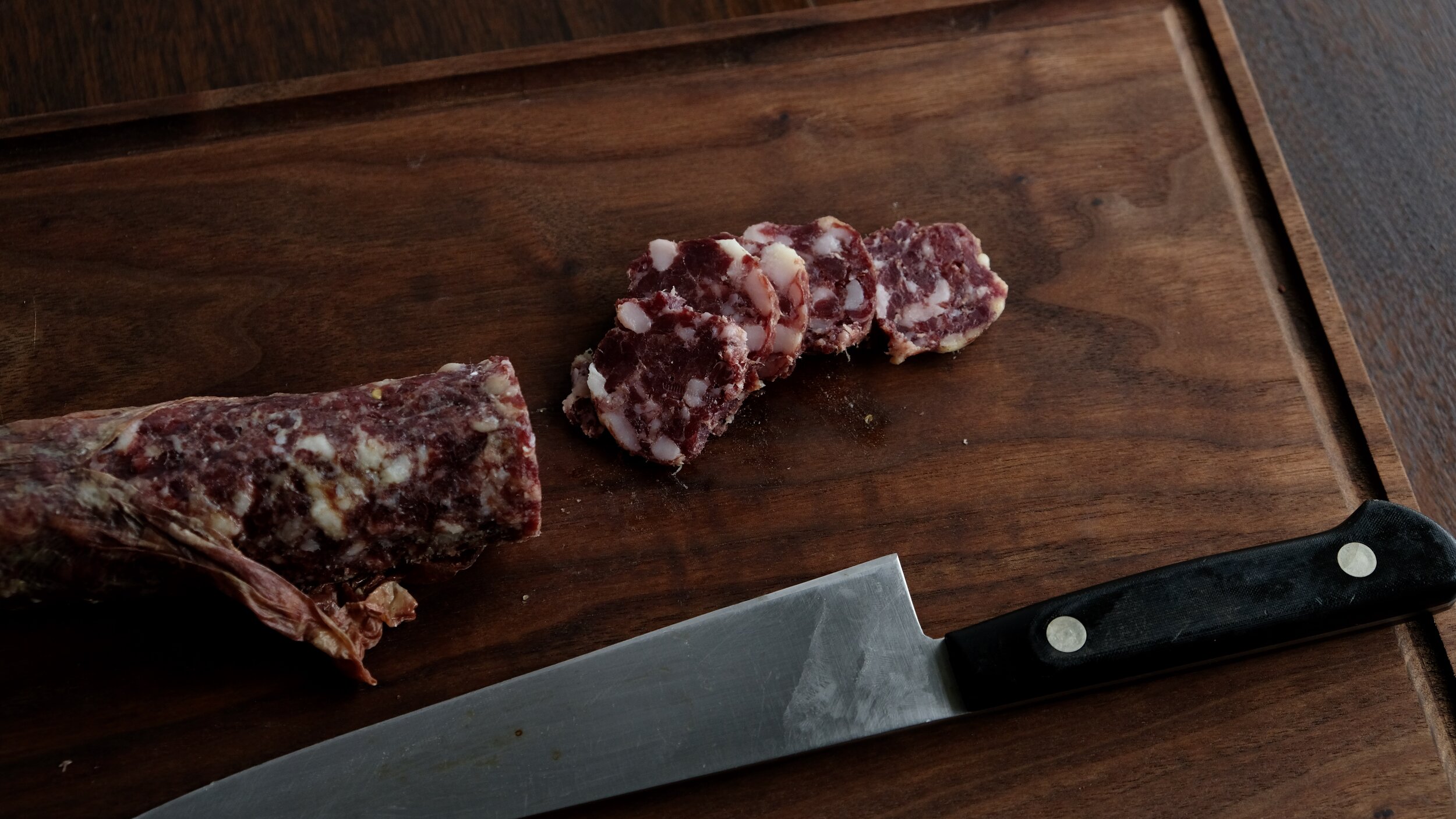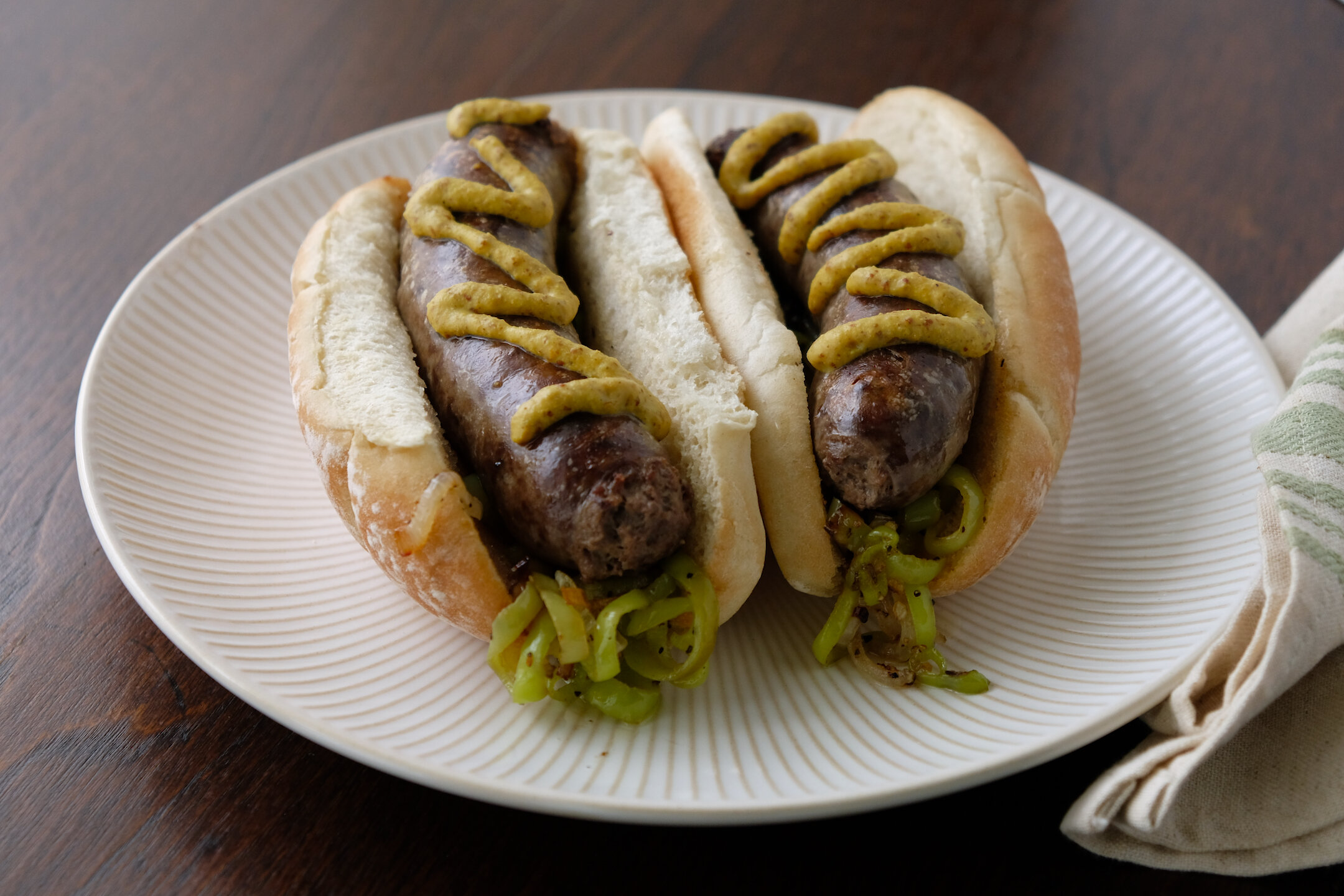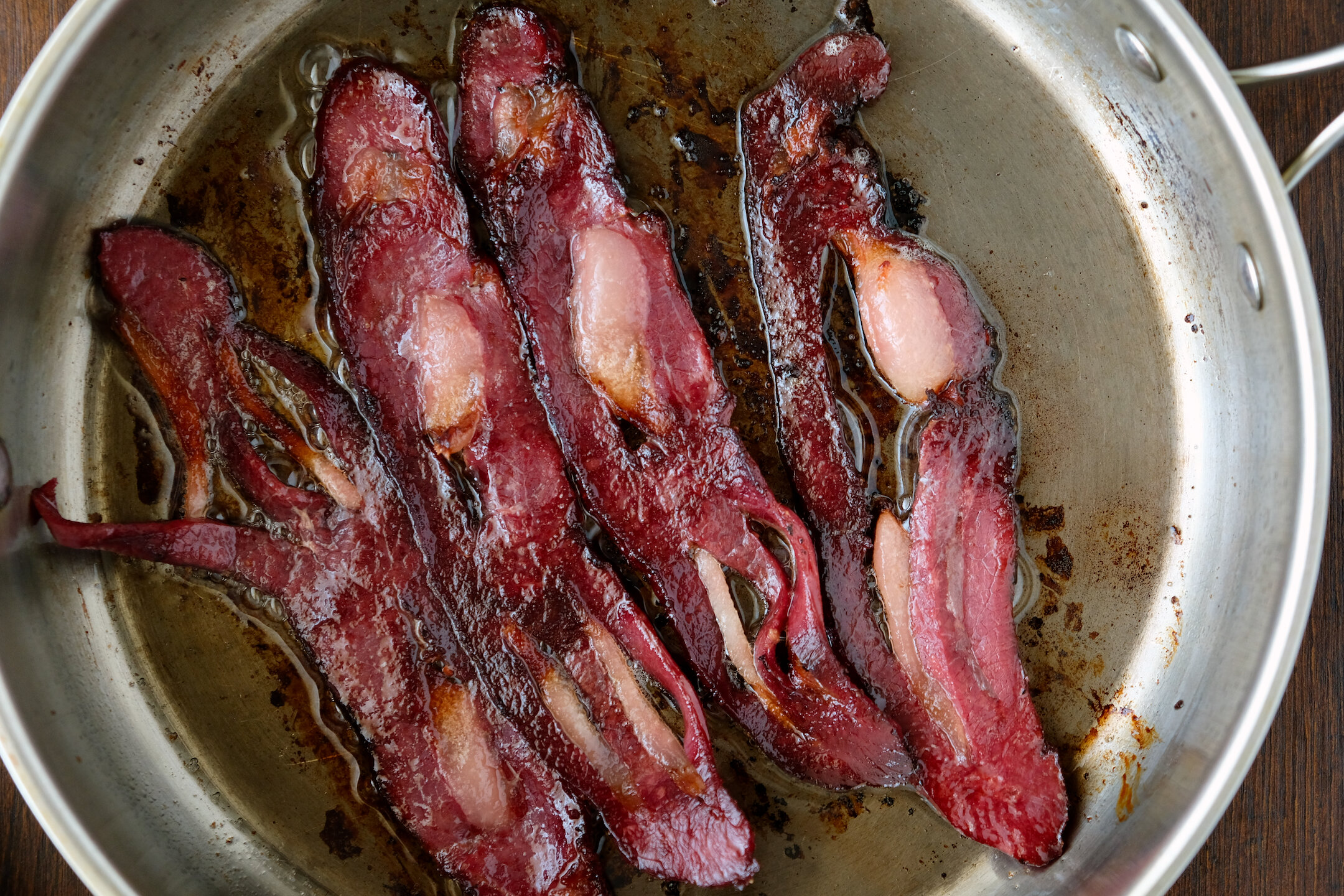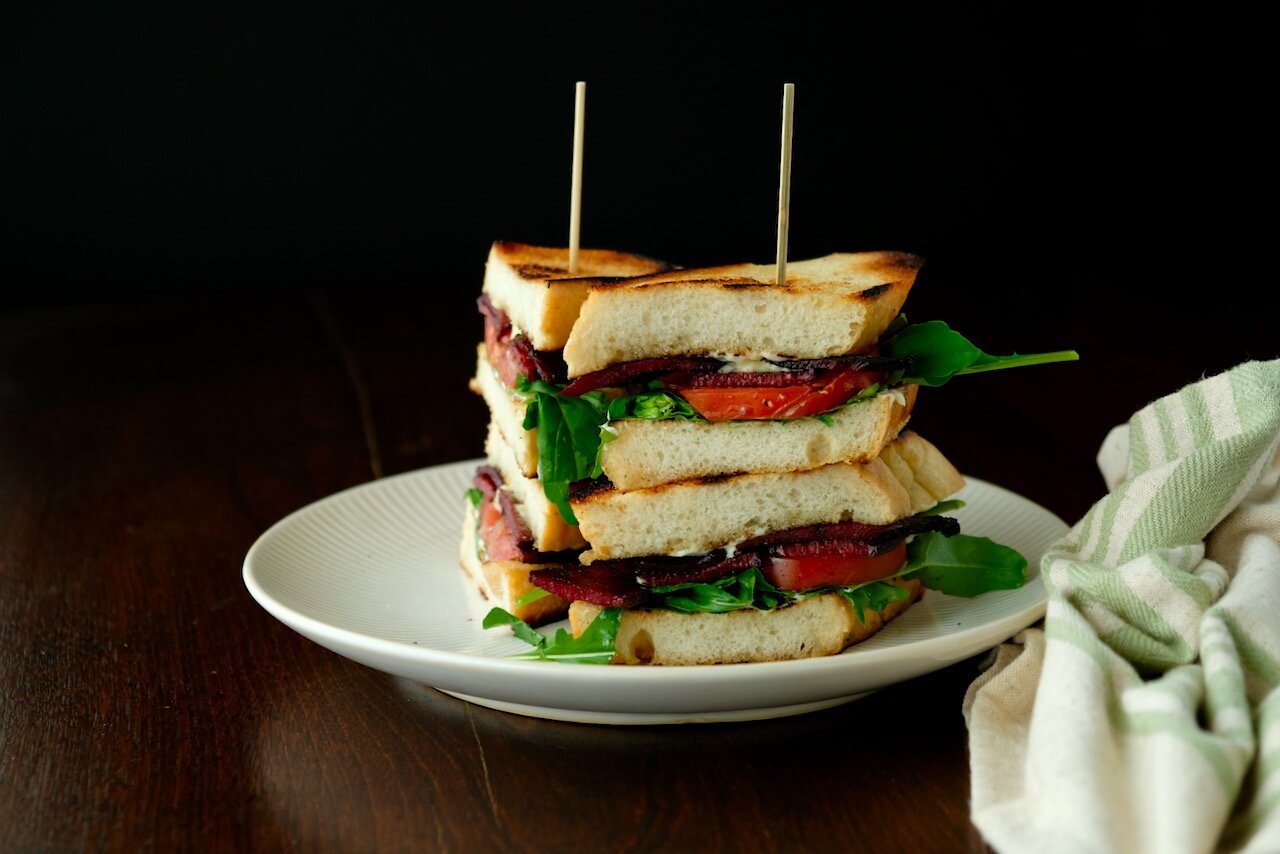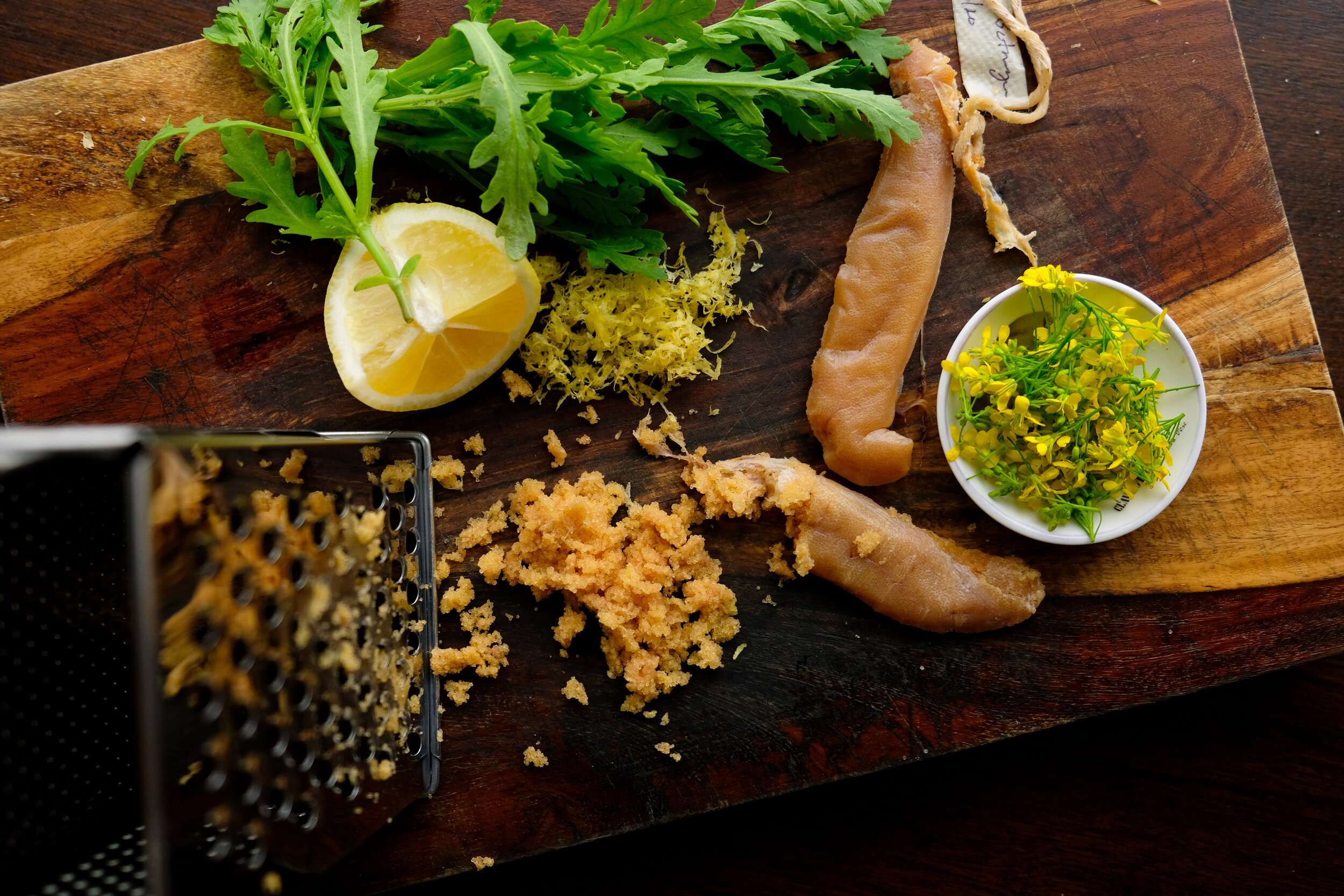Venison Prosciutto

I almost forgot about this ham. It spent 9 months hanging in our curing chamber and then we vacuum sealed it to equalize in the refrigerator. The plan was to give it 2 months to equalize, but that was almost 9 months ago. The other day, I was moving some things around in the fridge when I realized that I had meant to cut into this ham about half a year earlier.
The idea of forgetting about a whole hind quarter of deer (albeit, a small one) in the fridge for months is something new to me. Not long ago, I had difficulty waiting hours, or even minutes for anything to be done. The idea of starting a project and waiting a year to taste it was absurd.
But more time spent afield and playing with charcuteries and fermentations has made me realize that sometimes, (most of the time), there shouldn’t be a rush when you’re cooking. It’ll be ready when it's ready, there's no need to speed it up, and honestly, it’s made cooking more enjoyable.
I spent years with a ticket machine barking time stamps at my face. I had food timed out to the second- I found ways to cook faster, hacks to get things done as quickly as possible. Efficiency was priority one, because as it turns out, people don’t care if the food is perfect if they have to wait too long. I haven’t heard a ticket machine in over two years, and coincidentally, I haven’t yelled at a person in that time frame either. Sometimes, things work out for the better.
This venison prosciutto is a reminder of a season long past, and how our perspectives and expectations can change. It’s texturally perfect, slicing as nicely as any Italian or Spanish ham I have ever put a knife to. It obviously lacks the fat of a pork ham, but it is still silky tasting, and as much as I hate the term, it almost “melts in your mouth”.
This deer ham tastes like concentrated venison in all the good ways. The deer we used for this ham was young, and I shot it over corn stubble, so it was mild to start with. Slightly earthy notes, with a hint of funk that you get from aging meat for months in a cure chamber, all the subtle flavors of a wild animal packed into paper thin slices. It’s a thing of beauty.
If you have a proper place to hang a deer hind quarter for the better part of a year (see our guides to dry curing and building a cure chamber) you should definitely make one of these. It’ll be worth the wait.
Venison Prosciutto Recipe
Other than the cure chamber, the only special equipment you need for this recipe is a kitchen scale that will measure in grams.
Prep time: 30 minutes
Hang time: 9 months
Ingredients:
Venison hind quarter (weigh it)
Kosher salt
Lard
Flour
Method:
Salt box the deer hind quarter. This is as simple as it sounds- put the ham in a container and pour salt over it. Turn the ham over, and pour more salt on it. Rub the salt into all surfaces of the venison. Continue rotating, pressing and adding salt until the hindquarter won’t take on any more salt.
Put the salted hindquarter in a non reactive container. Pour a layer of salt on the bottom, add the venison and cover with a little more salt. Place a cutting board or similar flat object on top of the venison and weigh the board down with something of equal or greater weight to the venison. Place in the refrigerator. Drain off liquid daily and add more salt as needed.
Cure the ham like this for around 1.5 days per pound of meat.
At the end of this stage, the ham should feel firm and look darker in color. If it hasn’t firmed up, add salt and continue to cure for 1-3 more days.
Now, rinse with cold water and rub off excess salt with a clean brush or rag. Pat dry.
Weigh the ham again (use grams, not pounds) and record the weight somewhere you won’t lose it. Hang in a curing chamber for 6-12 days (~70% humidity) until the exterior feels slightly dry but still a bit tacky.
Once that stage is over, remove from the cure chamber. Using room temperature lard, mixed about 50:50 by weight with flour, cover the ham completely. This is called a strutto, and it allows for the ham to dry evenly. Make sure to cover every surface of the ham, like a cheese wrapped in wax.
Hang for 6-12 months in a cure chamber. You’ll need to check it periodically for mold issues, and weigh it to check for doneness. Remember that weight you wrote down? Take that weight and figure out approximately 30-40% of that number. That’s how much you want to lose in water weight in the cure chamber. We pulled ours at 9 months when it reached ~35% weight loss. The longer you let it hang, and the more moisture loss there is, the more concentrated and funky the flavors are.
Note: the strutto will most likely get moldy. This is fine, keep an eye out for dark molds and scrape off as needed.
When you have achieved the desired weight loss, scrape off the strutto with a butter knife and vac seal to equalize. Store in the refrigerator for at least a month.
Scrape off any remaining strutto, trim the rind, and slice paper thin to serve.

